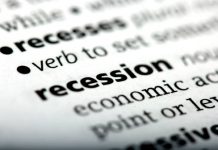Personal income growth accelerated to 0.6% month-on-month (m/m) in January, from 0.3% m/m in December (revised up from 0.2% m/m) – but was below market expectations for growth of 1.0%m/m. Compensation of employees (+0.9% m/m) accounted for most of the growth. However, the gain was partially offset by a 1.4% m/m drop in government social benefits as the extended child tax credit expired and a decline in one-time refundable tax credits issued by states.
Subtracting inflation and taxes, real personal disposable income rose an impressive 1.4% m/m in January.
Personal consumption gained 1.8% on the month, from an upwardly revised reading of -0.1% m/m in December, reversing last month’s losses. This was higher than 1.4% increase expected by the consensus.
Growth in goods spending was driven durable goods, as purchases of motor vehicles rebounded from December’s weakness, as well as “other” nondurable goods (led by pharmaceuticals).
Services spending growth was mainly supported by food services.
Adjusting for inflation, real spending rose 1.1% m/m, reflecting solid gains in goods (+2.2%) and services (+0.6%) outlays.
The personal consumption price deflator rose 0.6% m/m, and 5.4% on a year-on-year (y/y) basis – stronger than the expected 5.0% y/y reading.
The Fed’s preferred measure of inflation – core PCE – rose 0.6% m/m (v. 0.4% expected) from an upwardly revised 0.4% m/m in December, accelerating to 4.7% year-on-year (from an upwardly revised 4.6% in December). This was higher than expected 4.3% y/y growth.
The personal saving rate continues to normalize with a 4.7% reading in January. Revisions to fourth quarter income and spending resulted in an increase in our estimate of excess savings by $50 billion at the end of Q4 2022.
Key Implications
The American consumer continues to spend. Even when adjusted for inflation, growth looks like an outlier when compared to a decelerating trend of the second half of last year, especially given downwardly revised growth in Q4 2022. Today’s strong report puts real spending on a slightly stronger footing, with growth estimated to advance in range of 1.5-2.0% (annualized) in the first quarter.
Revisions also affected the distribution of price growth, making December’s and January’s core PCE deflator stronger than previously believed. Nevertheless, real disposable income growth has been positive in every month since June 2022, accelerating strongly this month. This helped shore up more savings and will keep consumer financially strong in the coming months. We expect the FOMC to continue to hike the federal funds rate by 25 bps at each of its next two policy meetings.













